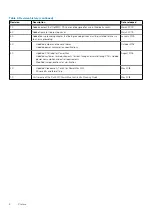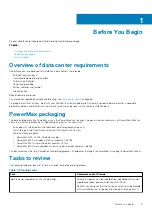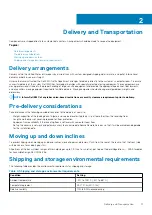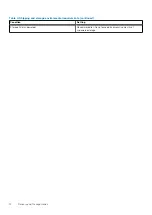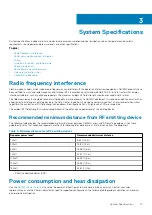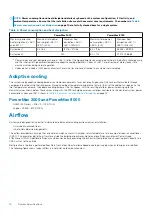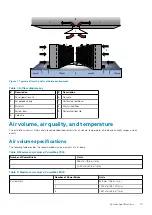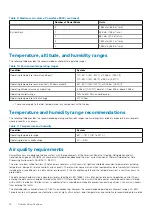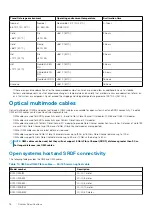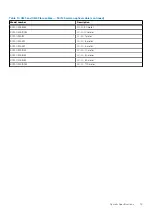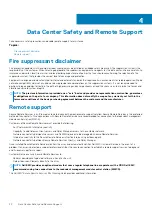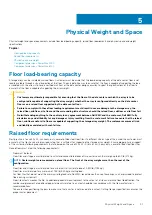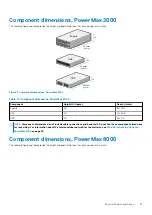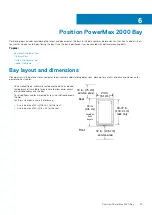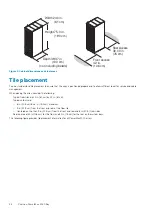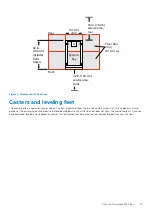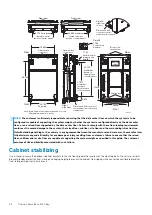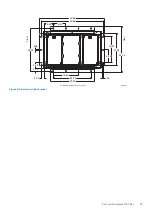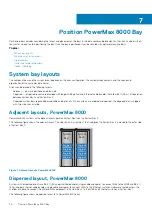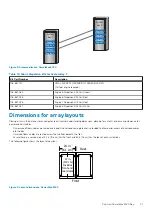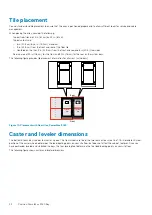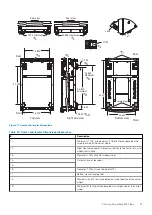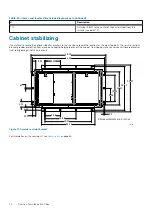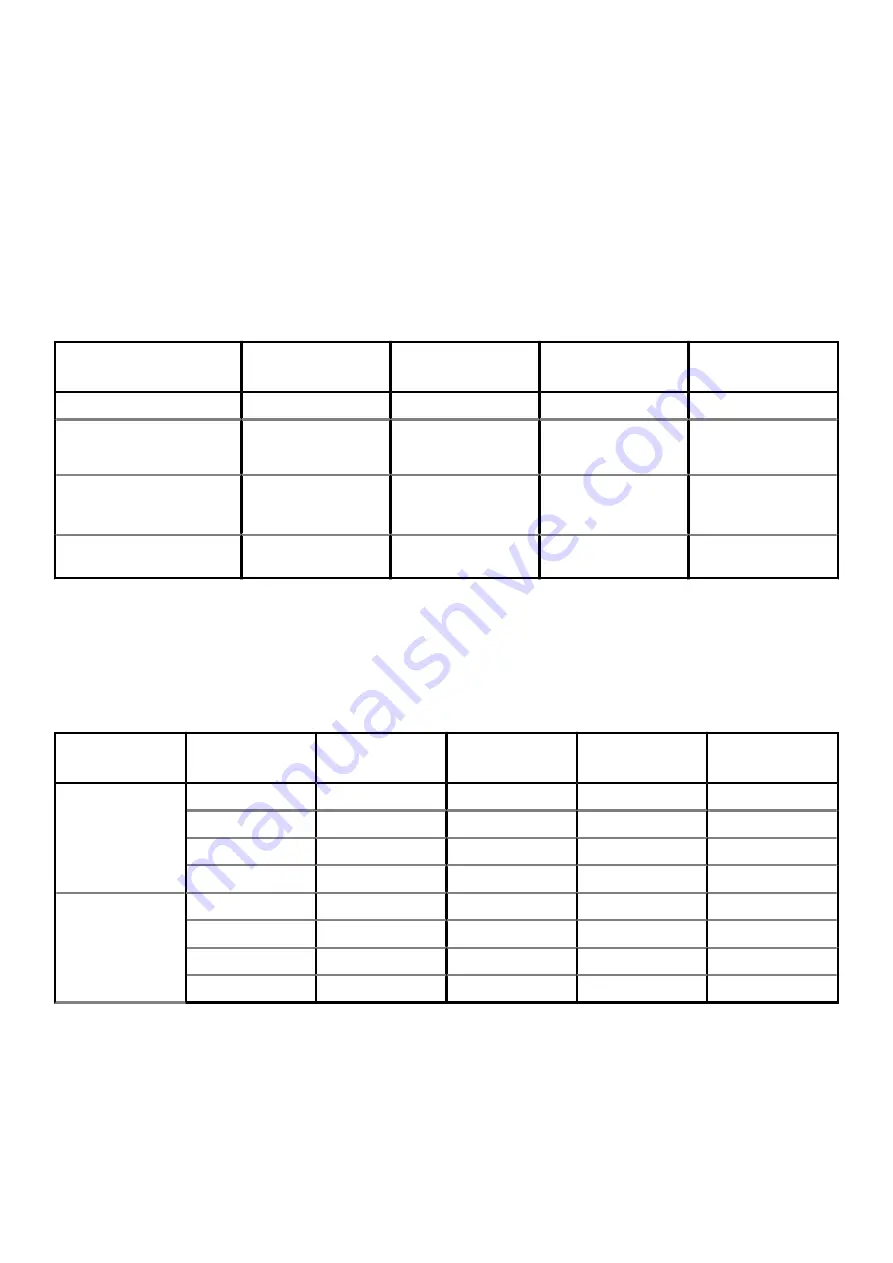
•
Use or create no more than one floor tile cutout that is no more than 8 in. (20 cm) wide by 6 in. (15 cm) deep in each 24 x 24 in. (61 x
61 cm) floor tile.
•
Ensure that the weight of any other objects in the data center does not compromise the structural integrity of the raised floor or the
sub-floor (non-raised floor) of the data center.
Physical space and weight
The following table provides the physical space, maximum weights, and clearance for service.
PowerMax 2000
Table 15. Space and weight requirements, PowerMax 2000
Height
(in/cm)
Width
(in/cm)
(in/cm)
Weight
(max lbs/kg)
1 system, 1 PowerBrick
75/190
24/61
42/106.7
620/281
1 system, 2 PowerBricks, or
2 systems, 1 PowerBrick each
75/190
24/61
42/106.7
950/430.9
2 systems, 2 PowerBricks in
one system, 1 PowerBrick in
other
75/190
24/61
42/106.7
1280/580
2 systems, 2 PowerBricks
each system
75/190
24/61
42/106.7
1610/730
a.
Clearance for service/airflow is the front at 42 in (106.7 cm) front and the rear at 30 in (76.2 cm).
b.
An additional 18 in (45.7 cm) is recommended for ceiling/top clearance.
c.
Includes rear door.
PowerMax 8000
Table 16. Space and weight requirements, PowerMax 8000
Bay
configurations
Number of
PowerBricks
Height
(in/cm)
(in/cm)
Depth
(in/cm)
Weight
(max lbs/kg)
System Bay 1
1
75/190
24/61
47/119
805/365
2
75/190
24/61
47/119
1104/501
3
75/190
24/61
47/119
1418/643
4
75/190
24/61
47/119
1667/756
System Bay 2
1
75/190
24/61
47/119
663/301
2
75/190
24/61
47/119
962/436
3
75/190
24/61
47/119
1276/579
4
75/190
24/61
47/119
1525/692
a.
Clearance for service/airflow is the front at 42 in (106.7 cm) front and the rear at 30 in (76.2 cm).
b.
An additional 18 in (45.7 cm) is recommended for ceiling/top clearance.
c.
Measurement includes .25 in. (0.6 cm) gap between bays.
d.
Includes front and rear doors.
22
Physical Weight and Space

